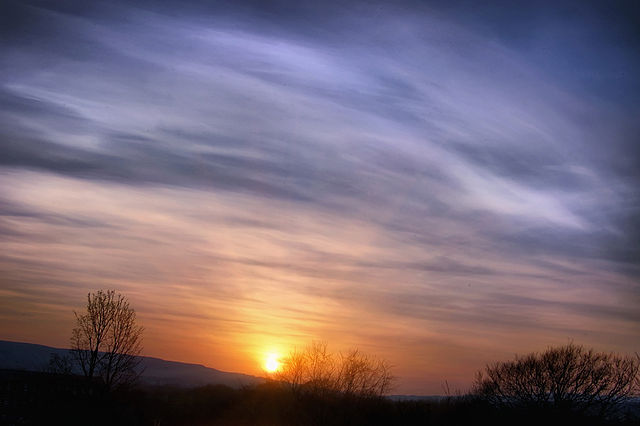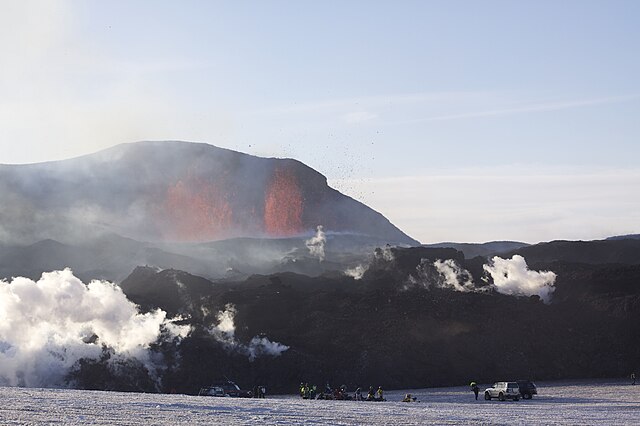2010 eruptions of Eyjafjallajökull
Between March and June 2010 a series of volcanic events at Eyjafjallajökull in Iceland caused enormous disruption to air travel across Western Europe.
Volcano plume on 18 April 2010
Dust particles that get suspended in the atmosphere scatter light from the setting sun, generating 'volcanic lavenders' like this one over the flight path of Leeds Bradford Airport in England during the aviation shutdown
People observing the first fissure at Fimmvörðuháls
Second fissure, viewed from the north, on 2 April 2010
Eyjafjallajökull, sometimes referred to by the numeronym E15, is one of the smaller ice caps of Iceland, north of Skógar and west of Mýrdalsjökull. The ice cap covers the caldera of a volcano with a summit elevation of 1,651 metres (5,417 ft). The volcano has erupted relatively frequently since the Last Glacial Period, most recently in 2010, when, although relatively small for a volcanic eruption, it caused enormous disruption to air travel across northern and western Europe for a week.
Gígjökull, Eyjafjallajökull's largest outlet glacier, covered in volcanic ash
North view of (from left to right) Mýrdalsjökull, Fimmvörðuháls and Eyjafjallajökull on 4 April 2010, taken from an altitude of 10,000 metres (32,800 ft)
Eyjafjallajökull and the aurora.
Eyjafjallajökull in March 2006, viewed from a recreation area on the Sólheimajökull, a glacier on the Katla volcano








